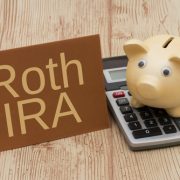Rolling an IRA into a Self-Directed Roth IRA
If you have a traditional IRA, you know that it limits your options. You have to invest with before-tax money, for example, so you can’t withdraw anything without incurring a tax. For people who want some more flexibility with their retirement, a Roth IRA is a great alternative. Not only is a Self-Directed Roth IRA a great way to add some flexibility to how you invest, but rolling a Traditional IRA into one can be easier than you think. Let’s explore.
Why Consider a Roth Conversion?
A few of the reasons to roll over? Tax-free growth and more flexible withdrawals. Traditional IRAs are funded with pre-tax dollars, as we mentioned. This means you’ll pay taxes on the money when you make withdrawals in retirement. Roth IRAs work with with after-tax dollars, meaning qualified withdrawals—including earnings—are completely tax-free. If you expect your tax rate to be higher in the future or want to avoid required minimum distributions (RMDs) in retirement, a Roth IRA could be a better fit.
The advantage of rolling your funds into a Self-Directed Roth IRA? There’s some more investment flexibility. Unlike a traditional IRA, which is often limited to stocks, bonds, and mutual funds, a Self-Directed Roth IRA allows you to diversify your portfolio. You can broaden your horizons to assets like real estate, precious metals, private loans, and even cryptocurrency.
Tax Implications of a Roth Conversion
While a Roth conversion offers long-term tax advantages, we’d remind you that there are some immediate tax consequences. When you convert a traditional IRA to a Roth, the amount converted is considered taxable income in the year of the conversion. For example, if you roll over $50,000 from a traditional IRA into a Self-Directed Roth IRA, that $50,000 will be added to your taxable income for the year, potentially pushing you into a higher tax bracket.
You’ll need to plan for this. And while you might do this with the timing where it makes sense for you, it’s a good idea to reach out to a financial advisor who knows your situation.
Setting Up a Self-Directed Roth IRA
Once you’ve decided to roll over your traditional IRA into a Self-Directed Roth IRA, the next step is setting up your new account. We can help here. A Self-Directed IRA custodian or administrator will facilitate the conversion process and guide you through the steps. Unlike standard financial institutions, Self-Directed IRA custodians specialize in alternative investments. And we offer the infrastructure needed to manage them.
When selecting a custodian, look for experience with Roth rollovers. Make sure they can handle the administrative complexities of alternative assets. Your custodian should make it as easy as possible to handle the paperwork involved in a Roth IRA rollover.
Investing with a Self-Directed Roth IRA
Once your Roth IRA is set up and the conversion is complete, the real advantage begins. You can now diversify beyond traditional investments. With a Roth IRA, you can allocate your retirement savings into a broad array of assets. For instance, if you’re interested in real estate, you could purchase a rental property, using the income from tenants to grow your retirement savings tax-free.
Of course, this is just a sampling of the benefits you might get when you “roll” with a Self-Directed Roth IRA. Interested in learning more about Self-Directed IRAs? Contact American IRA, LLC at 866-7500-IRA (472) for a free consultation. Download our free guides or visit us online at www.AmericanIRA.com.









